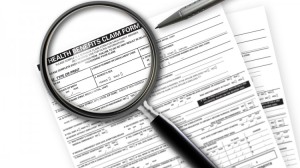 Millions of Americans are potentially overpaying on their medical bills because of common errors, whether it’s duplicate charges, incorrect information like a wrong insurance ID number, or an inflated quantity of services provided.
Millions of Americans are potentially overpaying on their medical bills because of common errors, whether it’s duplicate charges, incorrect information like a wrong insurance ID number, or an inflated quantity of services provided.
Inaccuracies with any one of these issues could result in thousands of dollars being wrongfully added to your final bill.
In fact, mistakes on medical bills may be more widespread that many consumers realize, according to Pat Palmer, founder of Medical Recovery Services, a national organization that helps patients identify and correct errors in their medical bills. “It’s astounding that eight out of 10 hospital bills we receive contain numerous overcharges,” Palmer shared.
To help protect your wallet, you should bring a healthy skepticism to any medical bill you receive by carefully checking for common errors to make sure you are paying the right amount.
How to Spot Common Medical Billing Errors
After you visit your medical provider, you’ll receive an invoice telling you how much you owe. However, because errors are common, make sure you request an itemized bill or statement from the hospital or your doctor. This way, you can carefully check each service you are being charged for.
If you have health insurance, you should also receive an explanation of benefits statement from your health plan. Compare the EOB statement with your medical bill very carefully. The EOB should provide details such as the type of service received, the date of service, the amount your health care provider billed your insurance company, the total amount that was not covered and the total patient cost.
Here are some of the more common medical billing errors to watch out for when you receive your itemized bill and EOB statement:
Duplicate charges: Carefully check for duplicate charges to make sure you were not billed twice for a single service or procedure. With an itemized bill, it should be much easier to spot.
Canceled tests or procedures: You could have been charged for a test or procedure that ended up being canceled. Make sure this doesn’t happen by carefully reviewing your itemized medical bill. If you think you were wrongfully overbilled, collect all the necessary documents to prove that you did not receive the service, so you can dispute the charge.
Incorrect patient information: Small errors such as incorrect name spellings or policy number misprints are common on medical bills. If your insurance ID number is wrong, it can lead to a claim denial or a full amount sent out by your health plan.
Upcoding charge: A hospital could inflate a patient’s diagnosis to one that represents a more serious procedure, leading to a higher medical bill. For example, you could have received the lowest level of emergency room services but be billed at the highest level. This is an illegal, fraudulent practice, and you should ask your health care provider to correct the charge immediately.
Unbundling of charges: This refers to the separation of charges that should have been billed under the same procedure code. This type of mistake can be tricky to identify unless you’re a certified medical bill coder, but you can reference the National Correct Coding
Initiative by the Centers for Medicare and Medicaid Services if you suspect such a mistake on your bill.
Balance billing when in-network: This occurs when the health care provider bills you for charges other than co-payments, co-insurance or any other amount than what was assigned by your insurance company. Balance billing is often improper when the care was provided by an in-network hospital or physician. If you think you’ve been balance billed, compare the bill with your EOB to make sure. Balance billing is most common when you are treated out-of-network for non-emergency care, as doctors can set the rate to charge you and bill you for anything over the amount your insurance covers.
Incorrect quantity: Make sure you weren’t charged extra for an incorrect quantity of items or medications. This mistake could be as simple as an extra “0” placed at the end of a number by the billing department.
Operating room and anesthesia time: If you underwent surgery, check your medical records to see how long you were in the operating room or under anesthesia. Because patients are usually billed in 15-minute increments in these instances, mistakes here can add up quickly.
By looking out for some of the most common errors on medical bills, you can protect yourself from potentially paying thousands of dollars in unnecessary costs.
——————————————————
Prepare For The Medical Coding Certification Exam Here!
Originally published on: Nerd Wallet
Follow Medical Coding Pro on Twitter: www.Twitter.com/CodingPro1
Like Us On Facebook: www.Facebook.com/MedicalCodingPro







This Post Has One Comment
Pingback: How To Spot 8 Common Medical Billing Errors | scrubs and suits
Comments are closed.